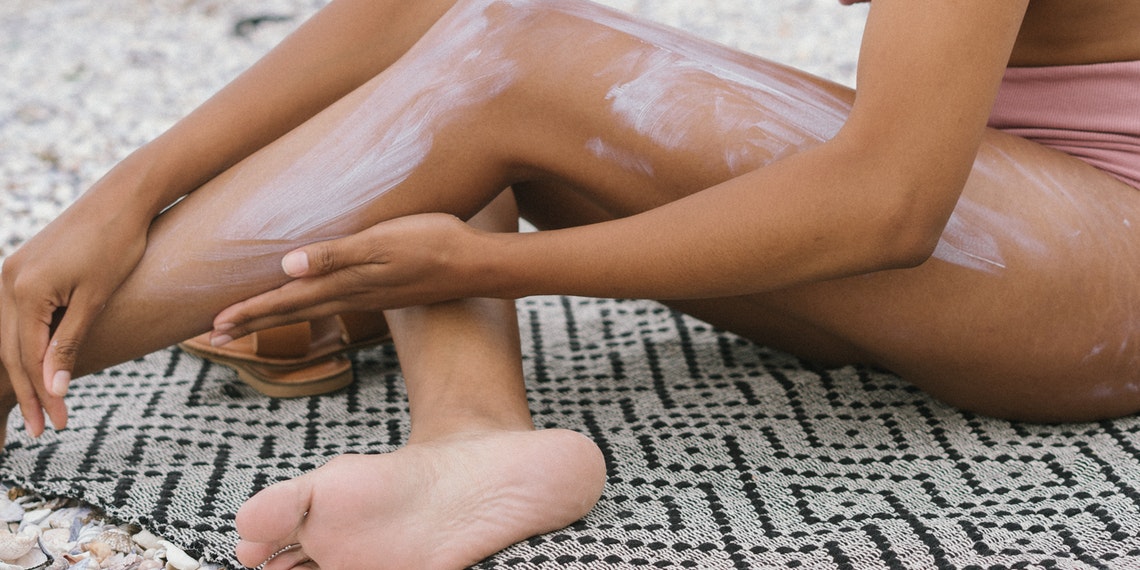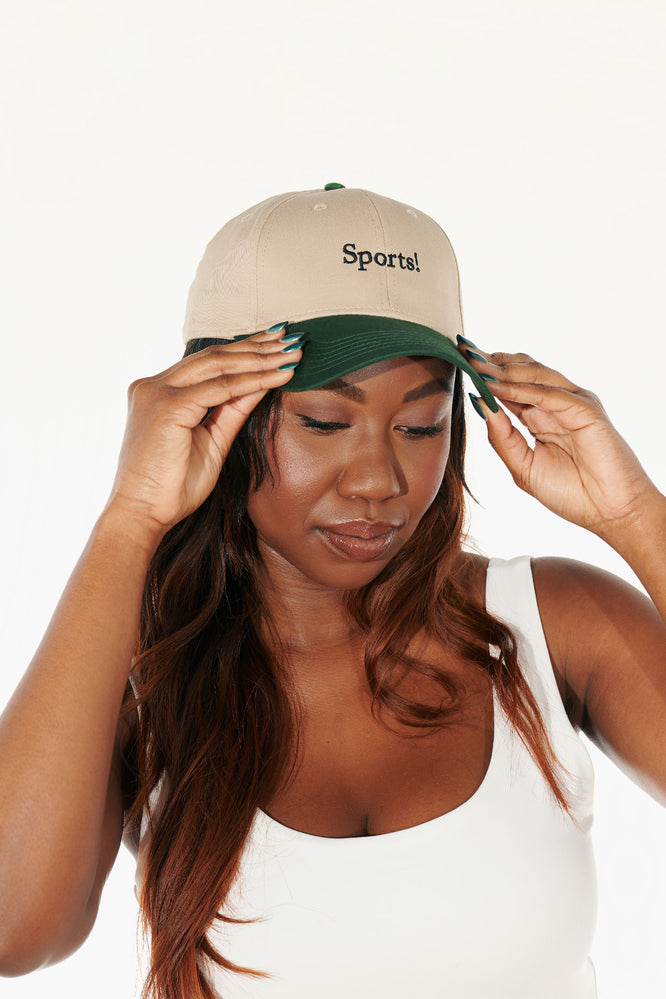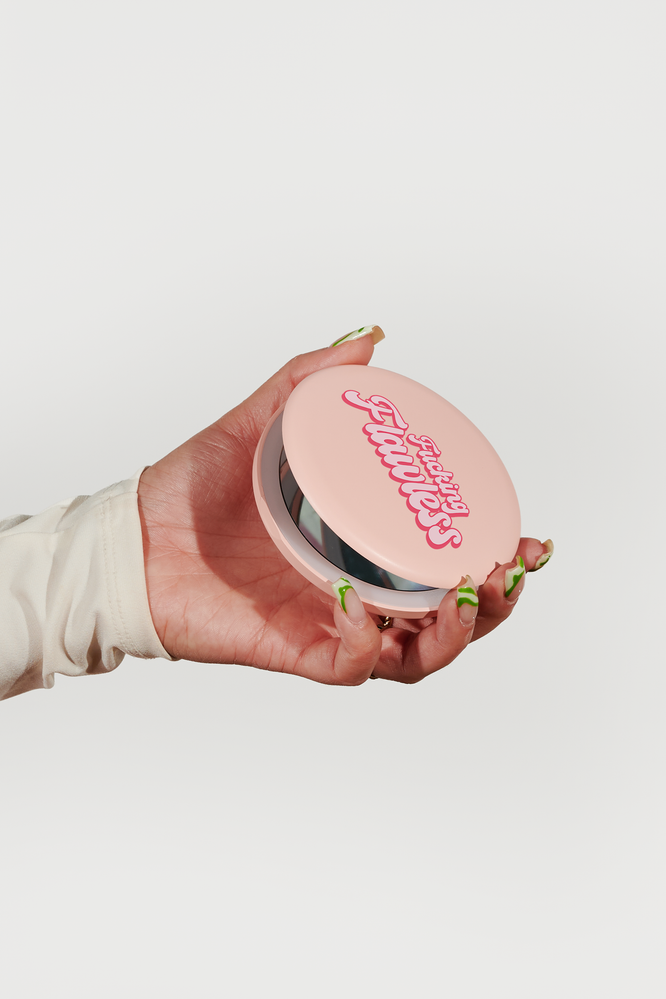You’ve heard it from your mother, your dermatologist, your first-grade teacher, and even Baz Luhrmann: Wear sunscreen. With the wealth of knowledge we now have on sunscreen’s ability to reduce our risk of skin cancer and to protect against sun damage like wrinkles, dark spots, and sagginess, it seems wild to think that some still skip this crucial step in their daily skin care routines. But in reality, the increasingly oversaturated sunscreen market and the onslaught of information, studies, and data surrounding it can often have a detrimental effect on consumers, leaving them unsure of what to believe and whom to trust. Over the years, certain myths about sunscreen have permeated our culture, and even the wisest of skin experts have fallen victim to them. With a scorching summer already upon us, it’s more important than ever to not only debunk these misconceptions but also to understand why they’re inaccurate.
Myth #1: Sunscreen Is Not Necessary Indoors, On Cloudy Days, Or Inside A Car
“False, false, false!” says Dr. Shereene Idriss, a board-certified dermatologist in New York City. “Yes, clouds do reduce some of the harmful UV rays, but they don’t block them all, particularly in areas where the ozone layer is dramatically reduced.” It’s also important to realize that UV light is not alone in its ability to cause harm. Outdoors, UV light, in the forms of UVA and UVB, can impact skin aging and increase the risk of skin cancer. Some of that light can travel indoors through windows, but we’re also exposed to other types of light indoors, including visible light and blue light, which can also impact the skin. For that reason, it’s crucial that sunscreen be worn daily, and it should not be skipped just because you’re inside.
Myth #2: One Application Of Sunscreen Will Last All Day
“If you have discovered the sunscreen that lasts up to 24 hours, please let us all in on that secret!” Dr. Idriss jokes. In fact, not only will one application of sunscreen not last all day, but it will last just a couple of hours. “Most sunscreens are tested for a specific amount of time, and that’s on average two hours,” explains Dr. Caroline Robinson, a Chicago-based board-certified dermatologist and founder of TONE Dermatology. “After two hours, the SPF protection goes down significantly, so you do need to reapply to maintain that initial level of protection.” If you are in the sun, reapplication every two hours is imperative, but if you’re mostly indoors, you can be slightly more lenient in reapplying so long as you apply before stepping outside again. “I tell people to bring a sunscreen brush, like ISDIN’s, with them wherever they go and quickly apply that to their arms and face and any exposed skin before going back outside,” Dr. Robinson notes.
Myth #3: The Higher The SPF, The Better The Protection
While this is not totally true, there is some logic behind the belief. “The SPF number does not reflect the duration of efficacy of the sunscreen; it indicates how long it would take for your skin to redden when using the product,” Dr. Idriss says. “So, for example, if you are using an SPF of 30, it would take 30 times longer for you to burn while using the sunscreen versus if you didn’t use it all.” There is also proof that the higher the SPF, the more protected you will be—but only to a certain point. “SPF 15 blocks 93% of UVB, whereas SPF 30 blocks 97%, and SPF 50 blocks 98%,” the New York dermatologist explains. “This may seem like a negligible gain in protection, but if you are prone to sunburns or skin cancers, that little gain can make a world of a difference.”
Once you go above SPF 50, though, the difference in protection is quite small. Dr. Robinson says a nickel-sized amount of sunscreen is required to cover the whole face and about a shot-glass full is necessary to cover the whole body. “But if you know that you’re not going to follow those recommended amounts—and most don’t—then you can actually benefit from a higher SPF,” she advises. “In doing so, you can get a similar protection to an SPF 30, which is what those measurements are based on, but you can get it with less than the nickel- and shot-glass-sized amounts.” Essentially, it will be more thinly spread than the recommended amounts would, but because it’s a higher SPF, it will be roughly as powerful.
Myth #4: People With Darker Skin Tones Don’t Need To Wear Sunscreen
“This is a misconception I’ve been fighting for a very long time,” says Dr. Robinson. “While people with darker skin tones are indeed less likely to burn, they aren’t immune from sun damage, and oftentimes, it will develop in the form of hyperpigmentation—potentially even more dramatically than sun damage would manifest on lighter skin tones.” Additionally, certain conditions, including post-inflammatory hyperpigmentation (dark spots that result from acne or irritation to the skin) and melasma, can be worsened by sun exposure, especially in people of color. So, even if your sun damage doesn’t come in the form of the traditional sunburn or freckles, it’s still important to wear sunscreen in order to protect your skin from other damage.
Myth #5: If You’re Not Prone To Burning, You Don’t Need To Wear Sunscreen
Much like the belief that those with darker skin tones don’t need sunscreen, there’s a misconception that if you don’t burn, you similarly don’t need SPF. “There’s this idea that just because you tan, you’re fine, but tanning can actually be a system of sun damage,” Dr. Robinson explains. “You can have enough exposure to the point where you no longer burn; your skin just goes straight to tan, and that’s not a good thing.” Immediate tanning can be an indication that your skin has skipped the warning response of burning entirely, and that’s actually a sign that your skin is damaged.
Myth #6: If You Wear Sunscreen, You Won’t Get A Tan

Many refrain from wearing sunscreen because they claim it will keep them from achieving that oh-so-coveted sun-kissed glow. But, as Dr. Idriss says, this is once again false. “Sunscreen makes your skin slower to react to UV rays,” she notes, “but it doesn’t prevent it from reacting altogether.” You can definitely still get a tan while safely protecting your skin with sunscreen.
Myth #7: Wearing Makeup That Has SPF In It Is Enough
Absolutely not! “Most makeups that include an SPF are not tested to the extent that sunscreens are, especially compared to the sunscreens that carry extra credentials, like an endorsement from the Skin Cancer Foundation, or anything like that,” Dr. Robinson explains. In order to reap the full benefits of the SPF listed on your makeup, you would need to use a hefty amount, up to the size of a nickel, and unless you’re a Kardashian, you’re probably not equipped to wear that much makeup. You also likely won’t be putting makeup on your ears, neck, chest, or any of the many regions of the body that are not the face but are equally susceptible to sun damage, and you won’t be reapplying makeup every two hours as you would sunscreen.
Myth #8: Spray Or Powder Sunscreen Is Just As Effective As Lotion
As new agents of delivery have come to the sunscreen market over the years, they’ve often appeared to be solutions to the stickiness and getting-it-in-your-eye tendency of traditional lotion, and while that can be true, spray and powder sunscreens can also have their shortcomings. “They can definitely be as effective, but a lot more needs to be applied in order to reach the same level of effectiveness,” says Dr. Idriss. Unlike lotion sunscreens, applying a spray or powder means that some of its contents will not land on the actual skin, so you’ll need to as much as double the amount you’re using.
Myth #9: Sunscreen Can Lead To Cancer Or Other Health Problems
While an alarmingly common belief, the idea that sunscreen can cause cancer or any other health issue is founded in no truth. “I wish this myth would go away because it’s been disproven time and again,” Dr. Robinson says. “Sunscreen does not cause cancer, and there have been so many studies to show that, but they sadly don’t make the headlines as much.” And if you’re really worried, do as Dr. Idriss suggests and simply opt for a physical sunscreen instead of a chemical one.
Myth #10: There’s No Real Difference Between Chemical And Mineral/Physical Sunscreens

Although both types of sunscreen achieve the same goal, scientifically, they work very differently. “Mineral and physical are interchangeable terms, and the most common ingredient in those sunscreens is either zinc oxide or titanium dioxide,” explains Dr. Robinson. “Those are metals, and if you think about a sheet of metal, you know that it literally just reflects light; so, physical sunscreens sit on top of skin and reflect the UV rays and scatter light.” Chemical sunscreens, on the other hand, absorb the UV light and put it through a chemical reaction (their namesake comes from this) that converts the light to heat. “Because the chemical sunscreens have to first absorb the light, they take a little longer to become active, so you can’t apply them while you’re outside or even right before,” the Chicago dermatologist notes. “You have to allow at least a few minutes, which the bottle will tell you.”
Some people can be more sensitive to the ingredients in chemical sunscreens, so for babies, children, and anyone with sensitive skin, a physical sunscreen is the way to go. Historically, some consumers have shied away from physical options because they can leave more of a white film, but some recent additions to the sunscreen market have gotten around that with advanced technologies. Dr. Robinson recommends SkinBetter’s SunBetter Stick, a physical SPF 56 sunscreen which uses a new technology to uniquely shape the zinc particles so that they sit atop the skin without leaving the familiar white cast. She also loves Eryfotona Actinica from ISDIN, another physical option that uses DNA Repairsomes to repair DNA damage that can come from sun exposure, and Revision Skincare’s IntelliShade TruPhysical, which has Vitamin C in it and effectively serves as two necessary products in one.
Myth #11: If You Didn’t Wear Sunscreen When You Were Younger And Already Have Sun Damange, There’s No Point In Wearing It Now
“Although most of the damage is actually accumulated while you’re younger (typically before the age of 18), it doesn’t make you immune to worsening damage,” Dr. Idriss says. Indeed, sunscreen protects from the visible signs of aging caused by sun exposure, but it also reduces your risk of skin cancer, and that alone is reason to start or continue wearing it even if you’ve already suffered some sun damage. “I recommend you adopt a ‘never give up’ attitude,” suggests Dr. Idriss. “You only have the skin you’re in, and hopefully your life will be long, so you might as well protect and enjoy it every step of the way.”
Myth #12: Sunscreen Never Expires
Of all the myths that exist about sunscreen, the notion that it doesn’t expire might be the most outlandish. “Sunscreen is doing a lot of work, so when you’re applying it, you want to be confident that you’re getting the coverage you think you are,” Dr. Robinson explains. Like everything in life, sunscreen has an expiration date, and you can find it by looking at the back or bottom of the bottle. As for any wiggle room when it comes to that expiration, like the “five-day rule” for milk, Dr. Robinson says, “we don’t take chances with sunscreen.”
Images: Retha Ferguson / Pexels; Maciej Serafinowicz / Unsplash; Antonio Gabola / Unsplash; Taylor Simpson / Unsplash










































